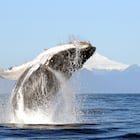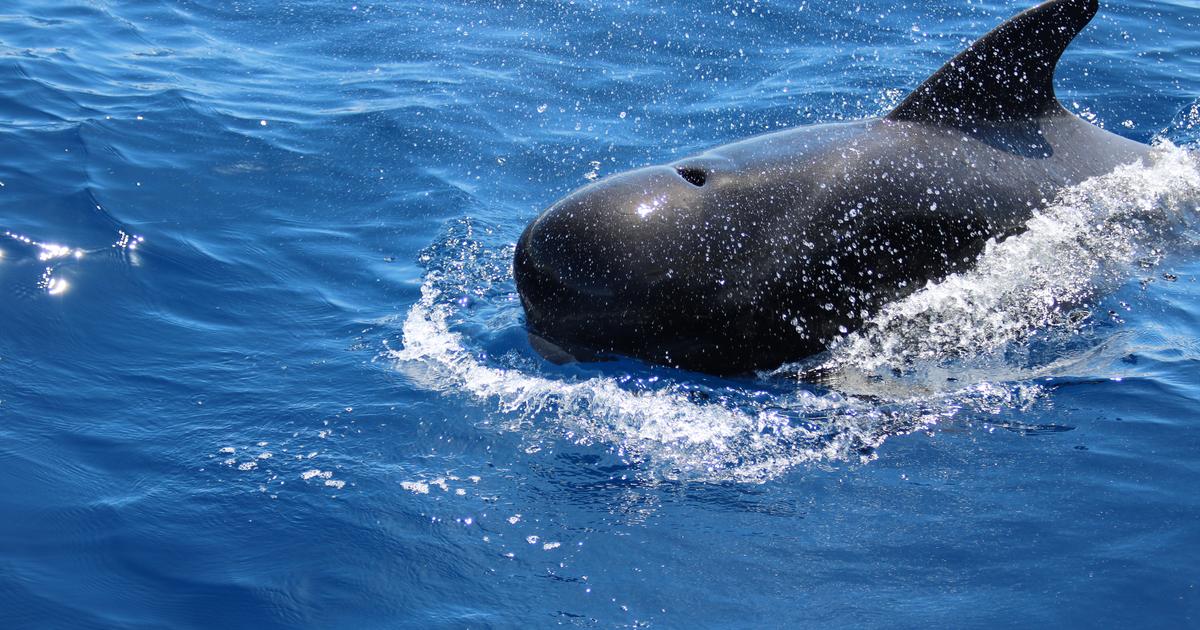Culture and language are two characteristics that are associated with humanity. However, the thesis of the National Geographic documentary series for Disney +
The secrets of the whales
is resounding: “Three years of filming reveal an extraordinary truth. Whales have a culture, ”says the narrator, actress Sigourney Weaver. Produced by James Cameron, the four-episode series follows underwater photographer Brian Skerry's follow-up of four species: killer whales, humpback whales, belugas and sperm whales. After seeing them, it is very difficult to deny that cetaceans manage their own forms of communication and subsist thanks to traditions shared by the different herds that are passed from mothers to children.
Many of his images are simply incredible and of magnetic beauty: sperm whales napping; belugas sailing on the ice and playing; killer whales stealing herring from Norwegian fishermen and teaching their young to hunt seals or rays; humpback whales fishing, emerging from the sea with their mouths open in huge groups to feast, or suckling while swimming. The viewer spends half a series thinking how they managed to shoot something like this, because whales are huge, without a doubt, the largest animals on the planet, but they are not easy to study. They are not particularly elusive - gazing at cetaceans is an activity that tens of thousands of people sign up for every year - but they have the entire ocean to disappear in the immensity of the waves.
Encounters with killer whales force the prohibition of sailing in Galicia
The who's who of humpback whales
The narrator of the documentary pronounces the phrase “whales are like us” several times to illustrate that, without sophisticated forms of communication and without their shared and supportive culture, they could not survive. Although that does not mean that they are like humans: they are mammals, but their experience of the world could not be further from ours. Whales have been considered monsters for centuries, turned into ghostly and lethal beings -
Moby Dick
-, hunted to the brink of extinction and recovered, from the seventies, as the greatest exponents of the environmental movement - "Save the whales" It was one of those slogans that marked an era and surely changed the world.
"With whales, Western environmental movements learned for the first time to tell a story as big as the world," writes Australian writer Rebecca Giggs in her recent book
Fathoms.
The World in the Whale
.
“The anti-whaling campaigns of the early 1980s were based on the idea that they should be considered the universal heritage of all humanity and that the people of the future, regardless of their nationality, deserved to live on a planet that did not it would have been stripped of its largest animals, ”continues Giggs, who resides in Perth, on the west coast of Australia, one of the great routes of whale migration.
The viewer spends half a series thinking about how they managed to shoot something like this
It was precisely at that time, Giggs recalls, that records, then vinyl, that reproduced the communications of the whales became fashionable.
A 34-minute album,
Songs of the Humpback Whale
, by Roger Payne, has sold millions of copies around the world since it was released in 1970. Then it seemed something exotic and distant, incomprehensible, as if the Nature would like to tell us something through the strange and sophisticated sounds that whales emit.
The series demonstrates the extent to which science has advanced in the study of the communications of these animals.
Photographer Brian Skerry sees an orca hunting in the documentary 'The Secrets of the Whales.' National Geographic
In one chapter, several scientists record and study the sounds emitted by different groups of humpback whales and there is not the slightest doubt that they communicate to carry out tasks, such as fishing, or so that adults can always know where their young are. Can we talk about languages? Do whales converse? Are they called by proper names? they sing? The documentary cannot answer some questions that still remain a mystery, but it makes it clear that these animals have built complex and unique societies, which change according to species and groups within the same species. The sounds emitted by orcas, belugas, humpback whales and sperm whales are very different, but they set sophisticated behavioral patterns within the life of the group.
In the seventies, the songs of the whales served to warn of the danger they were running. "The voices of the whales, far and wide, exemplified what it meant to hear a planetary extinction," Giggs says. "The fact that the vocalizations of the whales entered the public sphere framed as the sounds of a disappearing world was not a mere coincidence." Now they are important to remember that we are not the only intelligence on Earth. Ethologists such as Carl Safina have shown that difficulty in understanding how animals think does not mean that they do not think and feel. In his book
Wonderful Minds
dedicates a chapter to orcas describing them as "intelligent, maternal, long-lived, cooperative, very social and devoted to the family."
"They are like us, milk-producing warm-blooded beings, mammals with a personality not so different from ours," adds the American researcher.
A humpback whale in an image from the documentary 'The secrets of the whales' National Geographic
The Secrets of the Whales
shows the hunting techniques that different families of killer whales have adopted. They have two common characteristics: in each case they are very different, adapted to their environment, and can only be done through learning. It is, therefore, a cultural legacy that does not depend on instinct, but on patient and dedicated teaching. The teachers are always the grandmothers, because they are matriarchal societies. It is amazing to see how a pod of killer whales in New Zealand hunt stingrays: they have discovered that if they turn the animal it is immediately drugged. The matriarch finds him thanks to her sophisticated radar, turns him over and, once asleep, is handed over to the rest of the group, who learn while eating.
They are like us, milk-producing warm-blooded beings, mammals with a personality not so different from ours.
Carl safina
Watching a whale in the sea can be a wonderful experience, but also a bit frustrating.
Unless it is a sperm whale, which shows its tail when submerging, or one of the species that jumps out of the water, at first you don't see much: a back, a fin, a huge spot, a jet that comes out of the sea.
Getting an idea of the dimensions of the huge animal is not easy.
"Seeing whales in freedom made me a child again," writes Philip Hoare in
Leviathan or the whale
, a historical essay on humanity's relationship with these animals.
"I remembered what it was that had always fascinated me about these strange beings: their size, the great variety of shapes they take, a complex and colorful catalog that ranges from the small porpoise to the great fin whales and the mysterious sperm whale."
The documentary cannot take the viewer to the sea, but it shows him everything that is almost impossible to see in the ocean.
You can follow EL PAÍS TELEVISIÓN on
or sign up here to receive
our weekly newsletter
.















